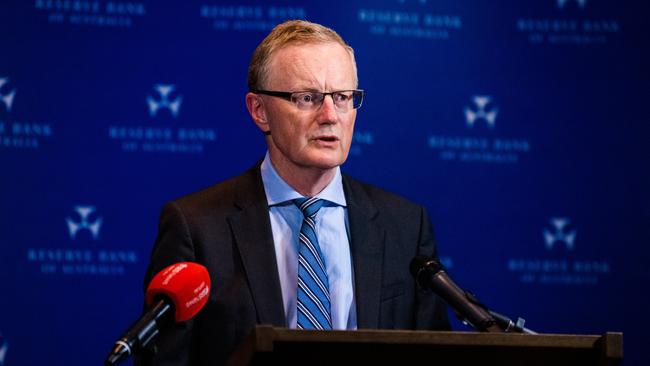Raising RBA bond purchases a break-glass option only
Purchases of bonds under the RBA’s quantitative easing program were meant to be dialled down in September.

It’s not too far off the mark to picture the Reserve Bank of Australia’s governor, Philip Lowe, in the wheel house of a creaking machine called the economy, surrounded by hissing pressure gauges, levers and pulley systems.
With every adjustment of the policy dials, Dr Lowe is trying to smooth economic cycles, build confidence, create jobs, and if at all possible, keep the economy from toppling into the abyss.
The time may be approaching for a further adjustment of the RBA’s government bond-buying dial.
Purchases of bonds under the RBA’s quantitative easing program, which helps to keep borrowing costs low for businesses, were meant to be dialled down in September as the RBA sensed that the furnace of the economy was roaring.
The planned cut in bond purchases to $4bn a week from $5bn a week amounts to a tentative tweak of policy settings. But it still loudly announced the RBA’s growing confidence in recovery and its long-term policy trajectory.
The decision to taper the bond-buying program, announced on July 6, was well founded. Unemployment fell to a decade-low of 4.9 per cent in June, shining a spotlight on the growing momentum of the economy.
Given the chaos brought on by the pandemic since the start of 2020 and the even worse scenarios that were avoided, don’t underestimate how joyful the central bank’s leadership was at the news that full employment is now visible on the forward radar.
But a spanner has entered the works.
Sydney and Melbourne are in lockdown with authorities battling to root out the fast-spreading Delta strain of the Covid-19 virus. It has brought Sydney to stand still for weeks and its lockdown could stretch well into August or beyond.
Around half of the economy has been slowed as Sydney and Melbourne endure their lockdowns. South Australia is also feeling some of the effects. Fears of a spread into regional NSW are also high. Combined, it could send the economy into reverse in the third quarter, snuffing out the strong recovery that has marked the last year.
So there’s some potential that the planned dialling down of the QE program could be suspended at least until November, when higher vaccination rates may have been achieved, greatly reducing the need for damaging lockdowns.
It may also be that the RBA just ploughs ahead in September, confident the heat remains in the economy and that the rebound will be robust after lockdowns end.
Or, the RBA might invoke the flexibility that it is now trumpeting in relation to its evolving policy approach. Dr Lowe has talked about making policy changes in response to data, not dates, and has pointed to the option of either increasing or reducing bond buying as required.
There was talk this week that one option the RBA might pursue in September is an increase of bond buying to $6bn per week, scuttling the plan to reduce to $4bn.
Westpac chief economist, Bill Evans, a voice that demands attention given his long history of accurately forecasting the RBA’s moves, said a jump to $6bn in weekly bond purchases in September would help to support battered confidence.
Westpac is among a growing number of economists now forecasting a significant contraction in the economy in the third quarter. The words “double-dip recession” are also bubbling back to the surface.
“Lifting purchases to $6bn per week would send the right signal that the (RBA) Board was prepared to use its new flexible policy tool to respond to changing economic conditions,” Mr Evans said.
“It would be an effective signal that the RBA is prepared to use its policy tools flexibly to address any unexpected economic developments.”
The problem with Mr Evans view is that a sudden lift in purchases might jar and create undue alarm. The RBA might appear skittish in the face of what is still likely to be a passing squall for the economy.
High in the wheel house looking out, Mr Lowe would still consider that raising bond purchases is an emergency option only. It would be classed as a break-glass option for now.
Keeping bond purchases at $5bn per week in September would also demonstrate the RBA’s willingness to be flexible in times of renewed uncertainty.
Leaving the QE dial unchanged is a much more likely option.
The Wall Street Journal






To join the conversation, please log in. Don't have an account? Register
Join the conversation, you are commenting as Logout